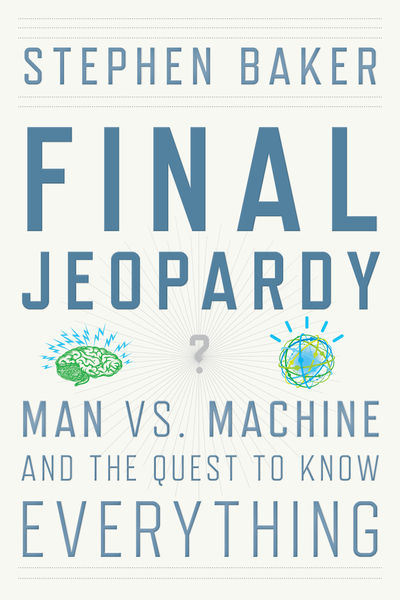Building a computer to play the TV game show "Jeopardy" seemed an impossible task to some when it was first proposed within the walls of IBM. How could a computer understand the nuances of the English language, decipher the sometimes tricky wording of a "Jeopardy" clue and then find exactly the right answer – all within just a couple seconds?
Indeed, early in its training, the computer – known as Watson – was sometimes comically inept. One practice clue it faced was this: "A 2000 ad showing this pop sensation at ages 3 & 18
was the 200th 'got milk?' ad." The correct response was "Who is
Britney Spears?" But Watson chimed in with, "What is holy crap?"
But Watson got better – much better. In "Final Jeopardy," author Stephen Baker shows the years of work that
went into building Watson and preparing it for a high-stakes match in 2011 against top "Jeopardy" human champions.
One thing that makes this book interesting is that it prompts you to think about thinking. When you're watching "Jeopardy," and you answer a clue correctly, have you ever wondered how you did it? How did your brain sift through the billions of possible answers in an instant and select the right response?
When IBM engineers set out to build Watson they had to think about this in detail, and recreate the mental processes that many of us take for granted.
Baker uses the examples of dogs:
"Deep down, computers don't know what dogs are. They cannot create 'dog' concepts. A two-year-old girl, in that sense, is far smarter. She can walk into that same kennel, see a Great Dane standing next to a toy poodle, and say, 'Doggies!" ... It's remarkably subtle, and she might be hard-pressed, even as she grows older, to explain exactly how she figured out that other animals, lke groundhogs or goats, didn't fit in the dog family."
To play "Jeopardy," Baker shows, IBM's team had to overcome several obstacles.
When faced with a clues, Watson first had to understand what the clue was looking for – was it a person's name, a place, a book title? It had to discern the key words in the clue that would lead it to the correct response. It then had to delve into its storage of facts and information (Watson was not searching the Internet) in milliseconds to come up with possible answers. And it had to understand game strategy and determine whether it had the confidence to respond.
The IBM team made hundreds, perhaps thousands, of adjustments to Watson. And in the end, it played "Jeopardy" very well.
I liked the book – I think most "Jeopardy" fans would – and Baker does very good job of laying out the steps and complications of IBM's project. Baker had a great deal of access to the IBM side, but I would have liked more from the Jeopardy side.
Also, it would have been nice to have some pictures of the many people profiled in the book.
Baker includes two chapters on artificial intelligence and while I understand why they're included, they go on a little too long.
In the end, Watson may have been far more of an engineering success than any kind of breakthrough in artificial intelligence. IBM designed it to do one thing – play "Jeopardy" – but it seems unlikely that the project will go down as major scientific step forward.
As an aside, for all the hoopla, I have to point out that "Watson" only mastered a modified version of "Jeopardy." Most "Jeopardy" games include some audio and visual clues, but as a concession to IBM, the show's makers agreed not to include those in the games Watson played.
-----
(Please support this blog by clicking on an ad.)

No comments:
Post a Comment